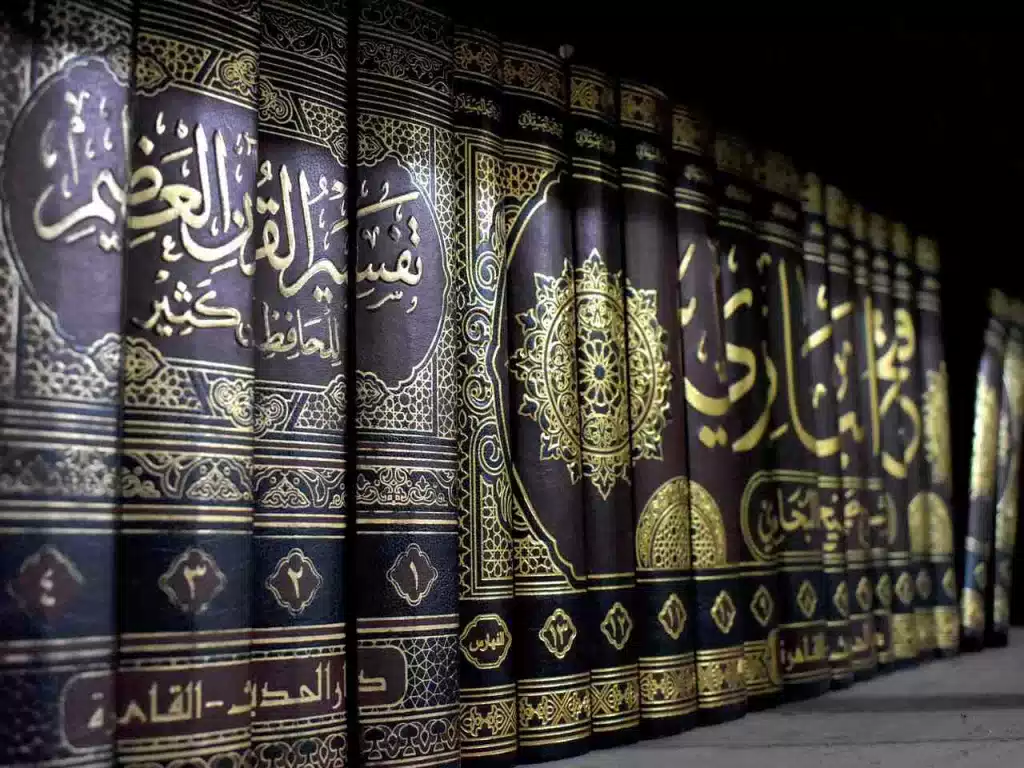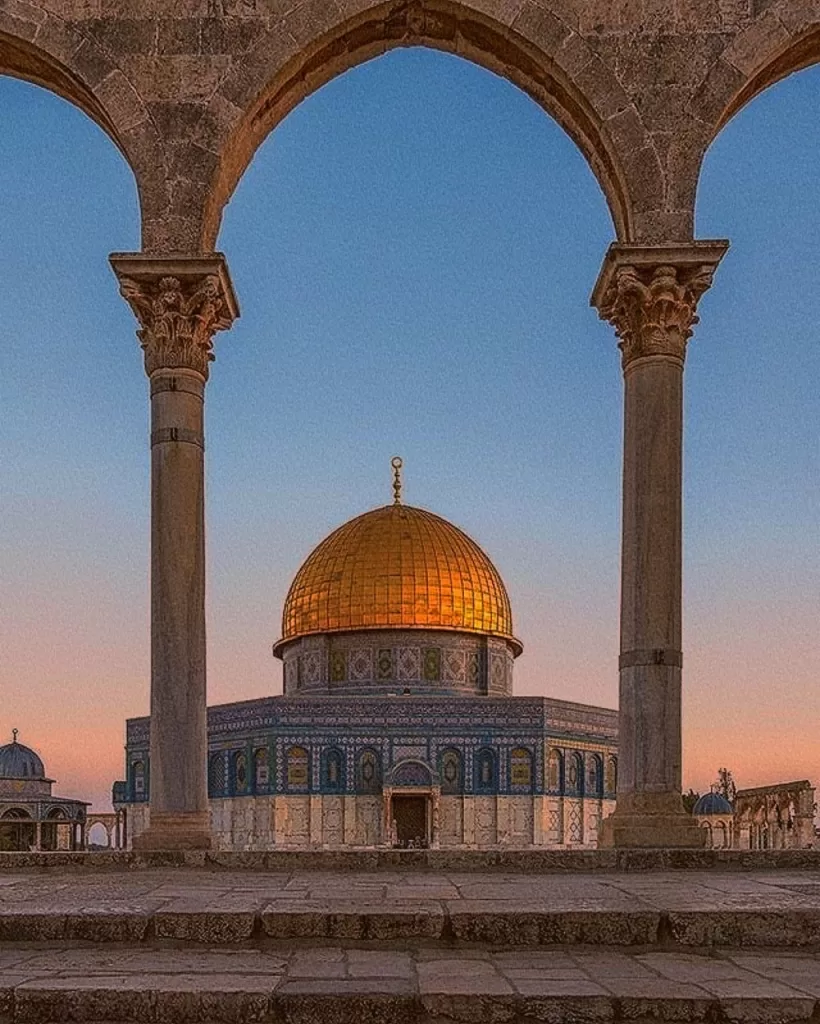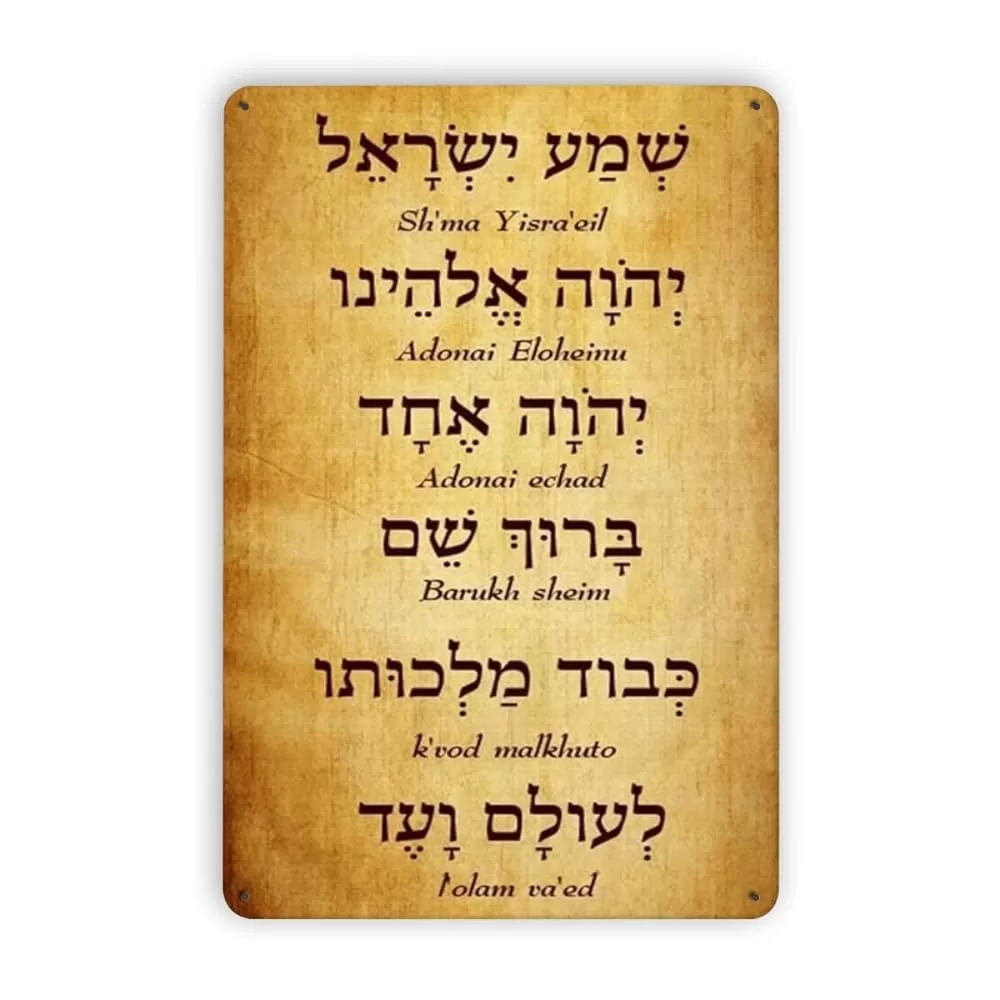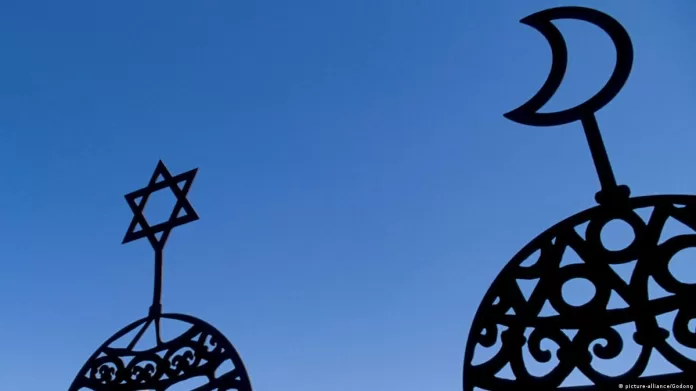“Prayer is God’“Prayer is God’s backstage pass into a personal audience with Him”. Tony Evanss backstage pass into a personal audience with Him”. Tony Evans
Judaism and Islam has a complex relationship over the centuries. On the one hand, there is mutual acceptance of basic tenet of monotheism and soundness of divinely inspired ethical standards to guide a believer’s life by both religions. On the other hand, Judaism’s critique of Islam as not an authentic divine message and Islam’s assertion that the original message of Judaism was authentic but was later distorted or corrupted by the Rabbis, therefore it is superseded by Islam. Prayer is a vehicle for glorification of divine, corporal, and spiritual purification, discipline and a source for strength and patience. Every religion has some form of prayer that involves symbolic cleansing of the body, supplication to divine and a formal set of body movements. Both Judaism and Islam emphasize the importance of prayer as a means of worship and spiritual connection.
There are many similarities as well as differences in Jewish and Muslim prayer rituals. However, compared to other religions, Judaism and Islam have remarkable similar prayer rituals. Religions evolve over time where local customs and sociological change influence religious practices. The sources used to explain rituals consist of revealed text and its explanation by sages and oral traditions. Jews consider the Tanakh (Hebrew Bible) and Muslims the Quran as revelation from God and both books were later preserved in written form and canonized. Jews also consider oral traditions of the Talmud passed over several generations and later preserved in written form also legally binding. Similar exercise was done by Muslims to preserve the vast corpus of traditions attributed to the Prophet Muhammad (PBUH) in the form of Hadith (sayings or actions of prophet). Later, difference of opinion among Rabbis and imams gave rise to various denominations of Judaism and Islam.
In the temple period, the main form of Jewish prayer was sacrifice at the temple. After the destruction of the temple in 70 AD, ritual prayer substituted for sacrifice. In early stages of the Prophethood of Muhammad (PBUH), there is general agreement among commentators that the prophet performed some form of prayer regularly.
Both scriptures have commandments for prayers. There are several verses in the Tanakh and the Quran about prayers using different terms including worship, prayer, supplication, praising God and service to God. The Hebrew Bible examples are in Exodus 23:25, “You shall serve your God who will bless your bread and your water”, Exodus 20:8, “Always remember the Sabbath day to keep it holy through prayer and benediction” and Genesis 32:4, “He therefore made a threefold preparation: prayer to the Almighty, appeasement, and battle”.
There are over sixty verses in the Quran commanding adherence to prayers. (Quran 2:153, 7:170, 8:3, 20:14, 22:25, 22:41, 24:56, 27:3, 30:31, 31:4, 33:33 35:18). There are repeated instructions in the Quran about ‘establishment’ of prayer and there is consensus among commentators that it means congregational prayer and some examples include “who believe in the unseen, establish prayer, and donate from what We have provided for them” (Baqara 2:3), “establish prayer, pay almstax, and bow down with those who bow down” (Baqara 2:43), “establish prayer, and pay almstax”. (Baqara 2:110) and “establish prayer and be mindful of Him” (Ana’am 6:72).

The essence of prayer is the intention of getting closer to divine grace and asking for forgiveness of sins. Scriptures and commentaries stress the essence of prayer. In Isaiah 1:15, “and when you lift up your hands, I will turn My eyes away from you; Though you pray at length, I will not listen. Your hands are stained with crime”. Great biblical commentator Moses Maimonides considers intention as necessary pre-requisite of prayer, “any prayer that is not [recited] with proper intention is not prayer”. (Mishneh Torah, Prayer and the Priestly Blessing 4:15). The Quran gives a comprehensive definition of righteousness that is not limited to ritual prayer by stating that “righteousness is not in turning your faces towards the east or the west. Rather, the righteous are those who believe in Allah, the Last Day, the angels, the Books, and the prophets; who give charity out of their cherished wealth to relatives, orphans, the poor, needy travelers, beggars, and for freeing captives; who establish prayer, pay alms-tax, and keep the pledges they make; and who are patient in times of suffering, adversity, and in the heat of battle”. (Baqara 2:177)
Religious rituals evolve over time and numbers, timing and specific gestures in prayer can vary even in the same religion due to different interpretations. The Tanakh and the Quran do not give exact details about the timing or the method of prayers. Rabbis and imams deduced it from verses scattered in the revealed text and oral traditions compiled later.
In the Tanakh in Daniel 6:11 three prayers are mentioned, “when Daniel learned that it had been put in writing, he went to his house, in whose upper chamber he had windows made facing Jerusalem, and three times a day he knelt down, prayed, and made confession to his God, as he had always done”. Three prayers are also mentioned in Psalm 55:18 “evening, morning, and noon, I complain and moan, and He hears my voice”. However, in I Chronicles 23: 30, only two prayers are mentioned, “and to be present every morning to praise and extol the Lord, and at evening too” while in Psalm 119-164 seven prayers are mentioned, “I praise You seven times each day for Your just rules” and in Psalm 119-62, a midnight prayer is also mentioned, “I arise at midnight to praise You for Your just rules”.
In Judaism, there are three daily prayers in morning (shacharit), afternoon (mincha) and evening (ma’ariv). On Sabbath and holy days, a fourth prayer mussaf (addition) is performed and on Yom Kippur there are five prayers when a fifth prayer nei’la (closing) is performed. Muslims pray five times a day as per the tradition of the prophet in the morning (fajr), afternoon (zuhr), late afternoon (asr), evening (maghreb) and at night (isha). Shia pray three times a day by combining afternoon and late afternoon and evening and night prayers. In Sunni Hadith traditions, this combination of prayers is also mentioned although it is not in general practice. (Sahih Bukhari, Volume 1, Book 10, Number 518 & 537. Sahih Muslim, Book 4, Number 1515-1516).
Different verses of the Quran mention different timings of prayer. In Ghafir 40:55, there is mention of two prayers “seek forgiveness for your shortcomings. And glorify the praises of your Lord morning and evening” and in Qaf 50:39 also two “and glorify the praises of your Lord before sunrise and before sunset. Two prayers are mentioned in Isra 17:78-79 “observe the prayer from the decline of the sun until the darkness of the night and the dawn prayer, for certainly the dawn prayer is witnessed by angels”. In Hu’ud 11:114, three prayers are mentioned, “establish prayer at both ends of the day and in the early part of the night” while in Rum 30:17-18, four prayers are mentioned “so glorify Allah in the evening and in the morning – all praise is for Him in the heavens and the earth – as well as in the afternoon, and at noon”. In Taha 20:130 six prayers are mentioned “and glorify the praises of your Lord before sunrise and before sunset and glorify Him in the hours of the night and at both ends of the day, so that you may be pleased ˹with the reward˺. And rise at ˹the last˺ part of the night, offering additional prayers, so your Lord may raise you to a station of praise”. The Quran was revealed over twenty-four years and this discrepancy suggests the evolutionary nature of the prayer ritual that transformed from recommended to mandatory.

Obligatory prayers in Islam are linked with the tradition of a miraculous journey. The night journey of Prophet (PBUH) from Mecca to Jerusalem is called isra’a (night journey) and then to the heavens to meet the divine is called me’eraj (ascension). In the Quran, the two events are described separately.
In Isra 17:1 “Glory be to the One Who took His servant ˹Muhammad˺ by night from the Sacred Mosque to the Farthest Mosque and in Najam 53-7-18, “while on the highest point above the horizon, then he approached the Prophet, coming so close, that he was only two armslengths away or even less”.
According to Hadith literature, compulsory five daily prayers were mandated during this night journey. (Sahih Bukhari, Volume 1, Book 8, Number 345. Sahih Muslim, Book 1, Number 328 & 329). According to this narration, initially fifty daily prayers were ordered but on insistence of Moses, Prophet Muhammad (PBUH) made several trips to the divine to finally bring down the numbers to five. (Sahih Bukhari, Volume 5, Book 58, Number 227. Sahih Muslim, Book 1, Number 321).
Every prayer ritual is usually preceded by cleansing of the body and Judaism and Islam are no exception. In the Tanakh, Exodus 30:19 “and let Aaron and his sons wash their hands and feet [in water drawn] from it.” This was the practice of priests in the temple and currently only washing of hands is performed. In the Quran in Maida 5:6, a detailed explanation of cleansing before the prayer is provided,

“O believers! When you rise for prayer, wash your faces and your hands up to the elbows, wipe your heads, and wash your feet to the ankles”.
In every religion, the prayer ritual includes facing a specific direction or deity for concentration. In Aramaic, the word qabel (facing) and Arabic word qibla (prayer direction) is used for the same purpose. In Judaism since the temple period, Jews face Jerusalem during the prayer. Several verses of the Tanakh and words of sages in the Talmud are clear in this regard. In I Kings 8:35 “they pray toward this place” and in 8:44 “they pray to GOD in the direction of the city that You have chosen, and of the House that I have built to Your name” and II Chronicles 6:34 “they pray to You in the direction of the city which You have chosen and the House which I have built to Your name”. Maimonides explains that “All, however, turned during prayer to the Sanctuary, in whichever direction that might be. This was the uniform practice from the times of Moses to those of Ezra”. (Mishneh Torah in Prayer and Priestly Blessing 1:3).
In early period of almost ten years of Prophethood and for about sixteen months after daily prayers became obligatory, Muslims used to face towards Jerusalem before the order came to face a new qiblah (direction of prayer) towards the Ka’aba in Mecca. (Sahih Muslim. Book 4, Chapter 46, Numbers 1071-1075). At that time, there was no sanctuary in Jerusalem but only ruins of the second temple built by Solomon. The Quran does not specifically mention Jerusalem, but in Isra 17-1, the Quran is very specific about the sanctity of the temple and uses the same word of mosque for Ka’aba and the site of the temple stating that “Glory be to the One Who took His servant Muhammad by night from the Sacred Mosque to the Farthest Mosque whose surroundings We have blessed, so that We may show him some of Our signs”.
All Muslim commentators identify earlier qibla as the site of the Solomon temple in Jerusalem that is still called ‘qibla-e-awwal’ (first direction of prayer). In 636, when caliph Umar bin Khattab visited Jerusalem, he ordered building a mosque at the far end of the ruins of the temple. Umayyad caliph Abdul Malik bin Marwan built a sanctuary over the ruins of the temple in 691 AD called qub’bat al sakhra (Dome of the Rock).
In the Quran in Baqara 2:142-150 several verses deal with change of direction of prayer that suggest that Jews may have criticized Muslims for changing of their prayer direction from Jerusalem to Mecca and change was on the wish of Prophet Muhammad (PBUH). Interestingly the Quran concludes the discussion by alluding to the higher purpose of prayer than mere facing a particular direction by stating that “Even if you were to bring every proof to the People of the Book, they would not accept your direction ‘of prayer’, nor would you accept theirs; nor would any of them accept the direction ‘of prayer’ of another”. (Baqara 2:145) and “everyone turns to their own direction ‘of prayer’. So, compete with one another in doing good”. (Baqara 2:148)

In the Tanakh, different verses allude to body movements during prayer including raising hands, prostration and touching face to the ground. In Numbers 10:35 “When the Ark was about to set forward, the cloud rolled over it, until Moses raised his hands in prayer”, in Deuteronomy 9:18, “I prostrated myself in prayer before the Eternal the same amount of time as before, forty days and forty nights” and in Numbers 16:22, “They fell upon their faces in prayer and said: O Almighty, You who have the power to discern the thoughts of all mortals”. Some rituals were observed only by priests in the temple and now prostration is not practiced in Jewish prayer. The rituals of Muslim prayers are described in detail in books of Hadith (Sahih Bukhari Volume 1, Book 8, Numbers 345-470. Sahih Muslim, Book 4, Numbers 735-1092).
Practical problems necessitate modification of the ritual and in both Judaism and Islam, prayer is shortened if facing a danger. In Mishna Berakhot 4:4, “Rabbi Yehoshua says: One who cannot recite a complete prayer because he is walking in a place of danger, recites a brief prayer” and in the Quran Baqara 2:101, “when you travel through the land, it is permissible for you to shorten the prayer, especially if you fear an attack by the disbelievers”.
Syriac term for prayer is selota that is used in Jewish liturgy and probably brought to Arabia by Syriac Christians that gave rise to Arabic term for prayer salat. Unity of God is the central pillar of faith in both religions. In Judaism the prayer is preceded by profession of faith in divine unity, the Shema Israel. The liturgical core of Muslim prayer is the verses of first chapter fatiha (opening) that is recited in every prayer. In rabbinical writings, the opening prologue before the main text is called petihah. Both prayers use supplications and praises to God.
Alhamdulillah in Arabic and barukh attah means praise to the God, rabb ul alamin in Arabic and melekh ha’olam in Hebrew means king of the universe and mercy and compassion of God is Rahman and Rahim in Arabic and rachamim in Hebrew. On completion of prayer the closing act is similar in Judaism and Islam. In the Talmud “when one recites: Peace, he first bows to the right and then to the left, (Yoma 53b). Muslim prayer ends by saying peace and blessing by turning face to the right and then left. Judaism and Islam encourage congregational prayers to foster solidarity and weekly special congregational prayer on Friday by Muslims and on Saturday by Jews is equated with special blessings.
Both Judaism and Islam emphasize the importance of prayer as a means of worship, connection with the Divine, and spiritual growth. These prayers play central roles in the daily lives of adherents, serving as reminders of their faith and commitments.
Prayers serve many purposes and are subject to individual interpretation and experience. Some may view prayer as a direct channel for divine intervention, while others see it as a means of self-reflection and empowerment. For many believers, prayer serves as a means of establishing and nurturing a direct connection with the divine. Prayer can offer solace and comfort during times of distress, grief, or uncertainty and communal prayer fosters a sense of identity and unity that strengthens social bonds.
“Prayer is an act of love; words are not needed”. -Saint Teresa of Avila
Notes
• Abdelwahab Meddeb and Benjamin Stora (Editors). A History of Jewish-Muslim Relations – From the Origins to the Present Day (Princeton: Princeton University Press, 2013)
• Reuven Firestone. Rituals: Similarities, Influences, and Processes of Differentiation in Abdelwahab Meddeb and Benjamin Stora (Editors). A History of Jewish-Muslim Relations – From the Origins to the Present Day (Princeton: Princeton University Press, 2013), p 701-711)
• Mohamed Hawary. Prayer in Judaism and Islam in Abdelwahab Meddeb and Benjamin Stora (Editors). A History of Jewish-Muslim Relations – From the Origins to the Present Day (Princeton: Princeton University Press, 2013), p. 713-719)
• Sefaria – https://www.sefaria.org/ texts
• The Noble Quran – https://quran. com/en
• Sahih Bukhari in Hadith Collection – https://hadithcollection.com/ sahihbukhari
• Sahih Muslim in Hadith Collection – https://hadithcollection.com/ sahihmuslim





